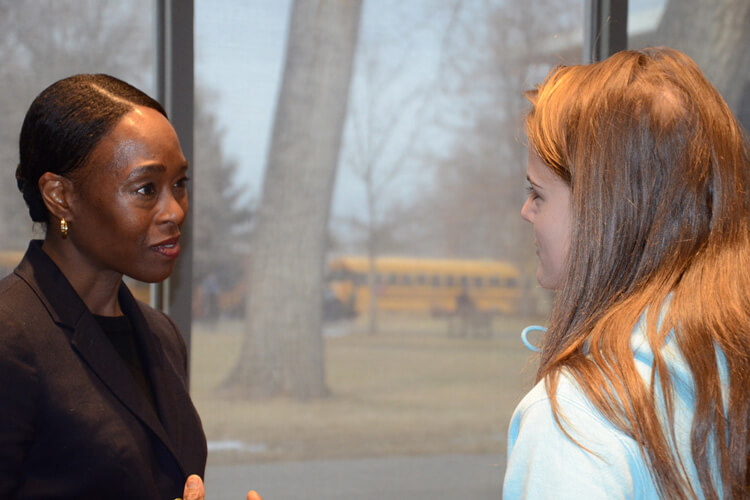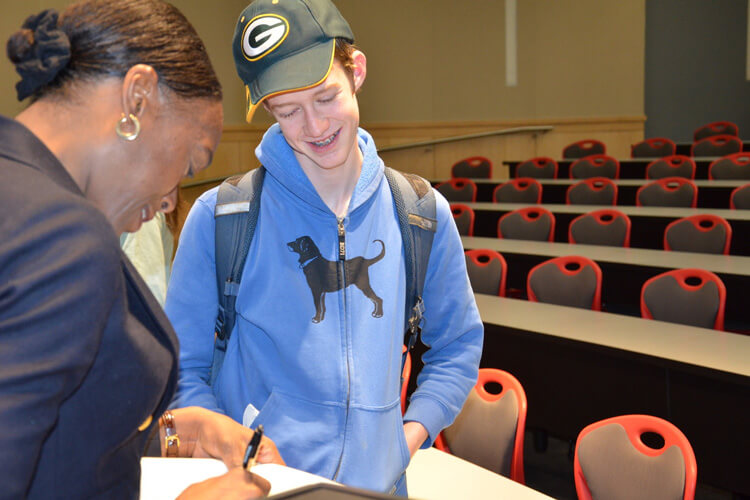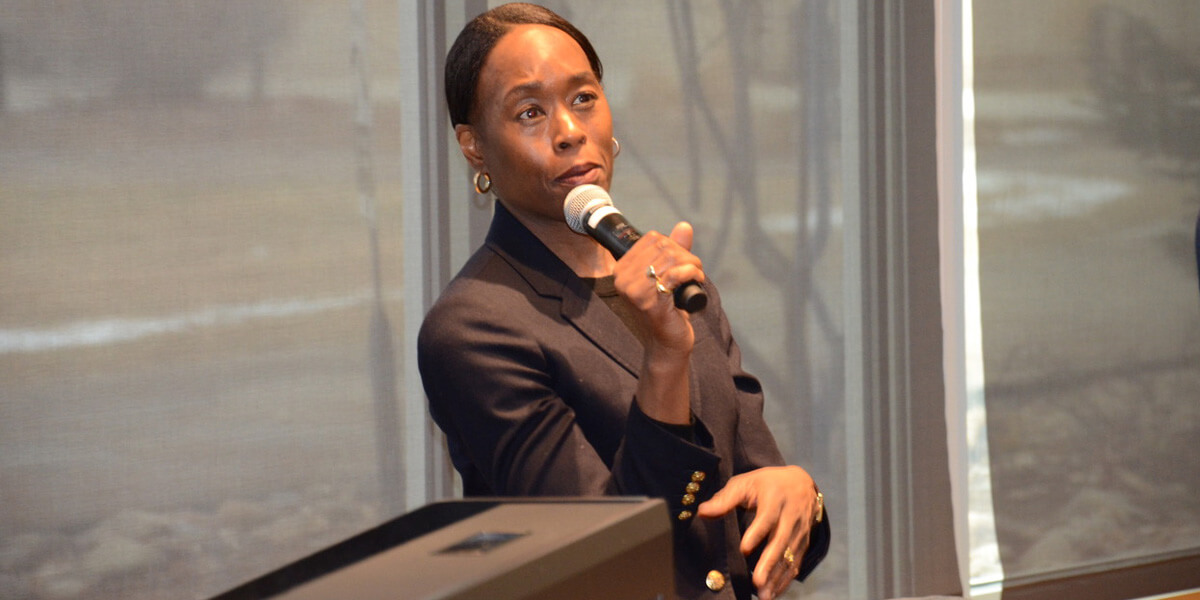How can a non-fiction writer open students’ minds about math, science, civil rights, history, and the workplace? That’s just what happened at Colorado Academy, when Hidden Figures author Margot Lee Shetterly spoke to CA Middle Schoolers who had read her book as part of a unit on rocketry.
Hidden Figures was the number one New York Times best-seller that also became the award-winning movie of the same name. It is the story of a group of black women working at the Langley Memorial Aeronautical Laboratory in Hampton, Virginia, who served as the brains and mathematical genius behind one of the greatest scientific achievements in history: the launch of astronaut John Glenn into orbit in 1962, making him the first American to orbit the Earth in the Friendship 7 rocket.
In the context of U.S. history, the moment restored the nation’s post-World War II confidence and turned around the Space Race that was heretofore dominated by the Russians’ Sputnik artificial Earth satellite.
Learning science through human stories
For CA students, the story of the women brought a human face to this scientific endeavor. “This is our first year using the book,” said Middle School science teacher Than Luong. He and colleague Kathleen Kirk wanted to incorporate non-fiction literacy into their classes and teach not just the science, but also the story behind the scientists, many underrepresented, who made significant contributions to their fields.
“The story gave students insight to some common struggles and hurdles that marginalized groups of people have to fight through in order to pursue their passions and careers,” he said. And the feedback from students on reading the book AND meeting its author were great.

Meeting the author
Shetterly, on campus for a community SPEAK lecture, spent an hour fielding questions from the students about everything from her research, her creative struggles, and her thoughts about how the movie treatment aligned with her original story. “The students’ questions were great—so engaged and insightful,” she said.
In a discussion group about the book, one student asked whether the Civil Rights movement in America might have occurred later in the country’s history were it not for the impact of World War II opening up the workplace for women and minorities.

Struggles that remain relevant
Said Luong, “The book also brings to light the stories that are still relevant to what is happening today, as we continue to progress towards a more civil and equal society. Students have said that they appreciate having the opportunity to learn something that they wouldn’t normally learn in a regular science class, that brings to light the human and social aspects of science.”
For Shetterly, writing Hidden Figures was a six-year endeavor, conducting research about NASA (her father worked for NASA), learning the science behind the women’s work, and interviewing them about their experiences. The women were well known to Shetterly, as she had grown up in Hampton, Virginia where the story takes place and said she felt a sense of responsibility in sharing the stories of the people she knew as a child. Today, the women are in their 80s, 90s and even 100s. Retired NASA mathematician Katherine Johnson (played in the move by Taraji P. Henson) is now 101 years old.
Equal focus: social studies & science
“As an educator,” said Luong about the experience, “It is so reassuring to have an administration that supports the progress we are trying to make as a science department. It is very uncommon for a science class to dedicate an entire unit to reading a book that has an equal focus on social studies and science. In addition to that, I am very grateful that our students had the opportunity to meet and have a personal conversation with the actual author, Margot Lee Shetterly, to try to understand her own journey and inspiration in bringing these marginalized figures to light.”
